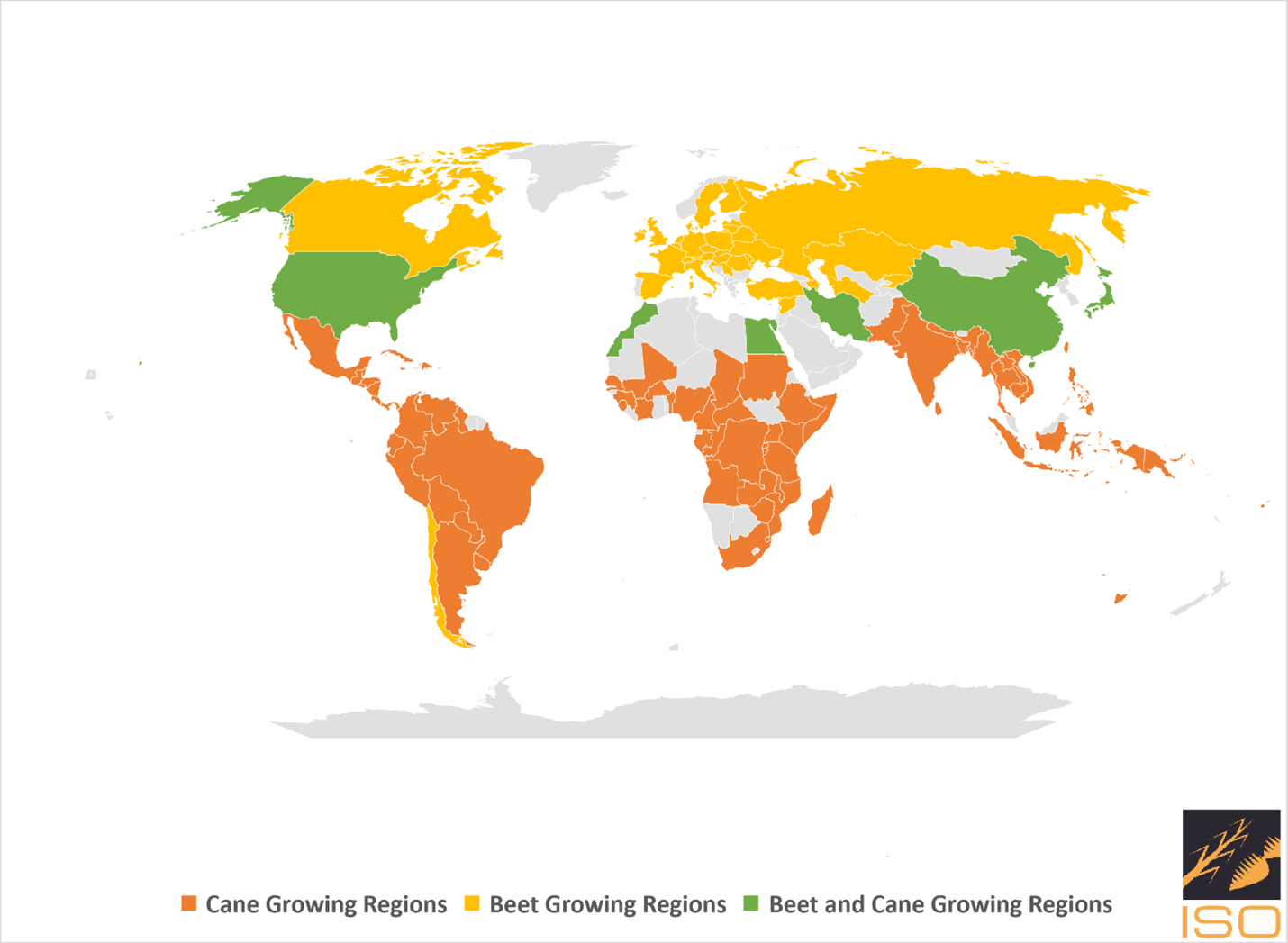Sugar is produced in over 110 countries from either sugar cane or sugar beet. Globally, approximately 80% of sugar is produced from sugar cane, and the remaining from sugar beet; in Canada, over 90% of sugar produced is refined in Canada from imported raw cane sugar. These two sources require different climate conditions and grow best in different areas throughout the world. The granulated sugar extracted from either sugar cane or sugars beets is the exact same: pure sucrose.
- Growing Sugar Cane. Sugar cane is a tropical type of grass, grown in countries near the equator.
- Growing Sugar Beets. Sugar beets are a root crop grown in more moderate climates.

Source: International Sugar Organization
Growing Sugar Cane
Sugar cane is a tropical plant, and can only be grown in countries where there are average temperatures of 24°C (75°F) (e.g. near the equator), combined with strong sunshine and either heavy seasonal rainfall or plentiful supplies of water for irrigation. The top ten sugar cane regions include Brazil, India, Thailand, China, Pakistan, Mexico, Australia, the United States, Guatemala, and Indonesia.
Sugar cane is a type of grass with a bamboo-like jointed stem that grows up to five metres in height and five centimetres in diameter. Sugar cane is grown on large farms called plantations. In general, sugar cane is harvested in the cooler months in each hemisphere. Fresh sugar cane spoils rather quickly after harvest and must therefore be transported quickly to nearby processing mills to minimize deterioration.

When sugar cane is harvested, it has a sugar content of approximately 14% by weight, depending on the variety of sugar cane and geographical location. Its sugar content also varies from season to season.
Growing Sugar Beets
Sugar beets are a root crop, which are successfully grown in many areas of the world, including Asia, Europe, and North America. They can be grown in moderate climates due to their ability to tolerate frost. Although sugar beets have previously been grown in Quebec and Manitoba, the only remaining producers of sugar beets in Canada are in Alberta and Ontario. In Canada, sugar beet seeds are typically planted at the end of April and the root is harvested in September of the same year.
Growing techniques and material inputs must be adapted to the climate and soil types of the region. For example,
- The land must have little stone content.
- Maximum yields are obtained only when spacing between rows and seeds are optimized.
- Sugar beets require approximately 50 centimetres of water over the growing season and are very sensitive to moisture levels. Irrigating crops too much can reduce the sugar content of the beets, and under irrigating can result in a lower harvest.
- It is also important that the correct types of fertilizers be applied at an appropriate rate to ensure good yields.
When mature, a sugar beet is an off-white colour, and looks like a turnip. In southern Alberta, the sucrose content is almost 19% by weight, depending on the variety. Like sugar cane, sugar content can also vary from year to year and in different geographical locations. For example, sucrose content of sugar beets in Europe is closer to 18% due to climate differences.

For more information, additional resources include:
- That Beet is Sweet - Statistics Canada
- Sugar beets are important to Alberta’s economy - Alberta Government
- Sugar: The Sweeter Side of a Unique Canadian Industry - Alberta Agriculture and Forestry
- Infographic - Sugar: From Field to Table


